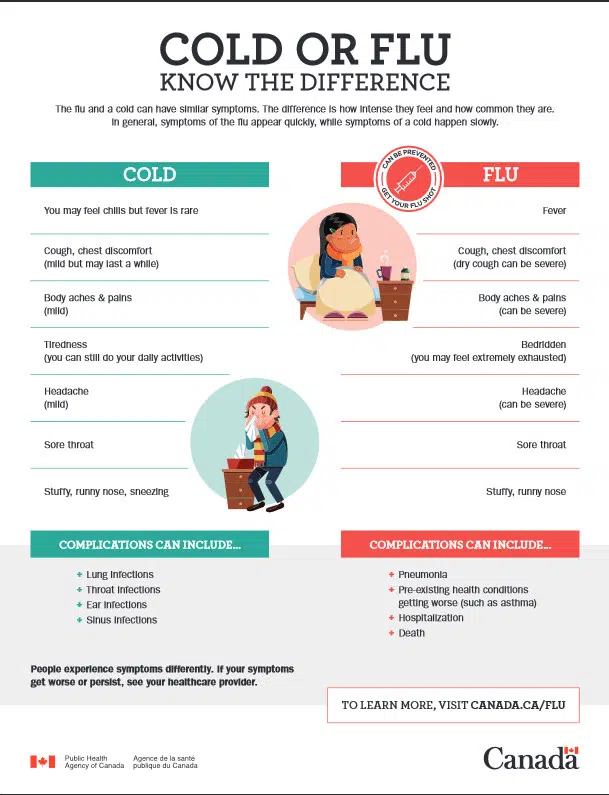 November is in full swing. Lots of things are happening as we approach the holiday season. The second last month of the year is also the start of the dreaded flu season.
November is in full swing. Lots of things are happening as we approach the holiday season. The second last month of the year is also the start of the dreaded flu season.
The influenza virus affects a person’s respiratory system. The virus spreads in close contact most commonly through coughing and sneezing.
Anyone can be at risk for catching the flu, but children and the elderly are at a higher risk for complications if they become ill.
Flu season puts a strain on public health year. Health Canada says the virus typically causes over 12,000 hospitalizations as well as around 3,500 deaths every year.
Public Health Ontario recommends that people receive the seasonal flu vaccine every year to avoid becoming ill. Flu symptoms can begin 1-4 days after you’ve been exposed.
Symptoms may seem similar to the common cold but there are some tell-tale ways to determine if you’re sick with a cold or the flu.
A fever is a good way to gauge if you are sick with a flu virus.
In severe cases, a fever between 102-104 degrees Fahrenheit is not uncommon. People who have fallen ill with the flu will often experience a severe cough and extreme fatigue. 
Dr. Alex Summers with the MLHU (Middlesex-London Health Unit) explains the importance of discussing the flu.
https://www.youtube.com/watch?v=ZFa5hiM0IDA
Those interested in receiving a flu immunization can visit their health care practitioner or make an appointment with a walk-in clinic. Most pharmacies offer the flu shot as well usually with no appointment necessary.
Many Canadians choose not to get their flu shot for personal reasons.
Health care professionals recommend that people keep their hands as clean as possible through frequent hand washing, and to not leave home if you’re sick.




